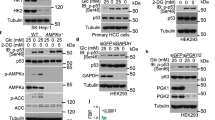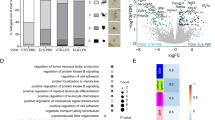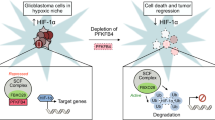Abstract
The Hedgehog (Hh) signaling regulates tissue development, and its aberrant activation is a leading cause of malignancies, including medulloblastoma (Mb). Hh-dependent tumorigenesis often occurs in synergy with other mechanisms, such as loss of p53, the master regulator of the DNA damage response. To date, little is known about mechanisms connecting DNA-damaging events to morphogen-dependent processes. Here, we show that genotoxic stress triggers a cascade of signals, culminating with inhibition of the activity of Gli1, the final transcriptional effector of Hh signaling. This inhibition is dependent on the p53-mediated elevation of the acetyltransferase p300/CBP-associated factor (PCAF). Notably, we identify PCAF as a novel E3 ubiquitin ligase of Gli1. Indeed PCAF, but not a mutant with a deletion of its ubiquitination domain, represses Hh signaling in response to DNA damage by promoting Gli1 ubiquitination and its proteasome-dependent degradation. Restoring Gli1 levels rescues the growth arrest and apoptosis effect triggered by genotoxic drugs. Consistently, DNA-damaging agents fail to inhibit Gli1 activity in the absence of either p53 or PCAF. Finally, Mb samples from p53-null mice display low levels of PCAF and upregulation of Gli1 in vivo, suggesting PCAF as potential therapeutic target in Hh-dependent tumors. Together, our data define a mechanism of inactivation of a morphogenic signaling in response to genotoxic stress and unveil a p53/PCAF/Gli1 circuitry centered on PCAF that limits Gli1-enhanced mitogenic and prosurvival response.
Similar content being viewed by others
Log in or create a free account to read this content
Gain free access to this article, as well as selected content from this journal and more on nature.com
or
Abbreviations
- Hh:
-
Hedgehog
- Mb:
-
medulloblastoma
- PCAF:
-
acetyltransferase p300/CBP-associated factor
- Smo:
-
Smoothened
- Ub:
-
ubiquitin
- Doxo:
-
doxorubicin
- Cispl:
-
cisplatin
References
Ruiz i, Altaba A . Hedgehog-Gli Signaling in Human Diseases. Plenum, 2006.
Barakat MT, Humke EW, Scott MP . Learning from Jekyll to control Hyde: Hedgehog signaling in development and cancer. Trends Mol Med 2010; 16: 337–348.
Teglund S, Toftgard R . Hedgehog beyond medulloblastoma and basal cell carcinoma. Biochim Biophys Acta 2010; 1805: 181–208.
Mabbott DJ, Spiegler BJ, Greenberg ML, Rutka JT, Hyder DJ, Bouffet E et al. Serial evaluation of academic and behavioral outcome after treatment with cranial radiation in childhood. J Clin Oncol 2005; 23: 2256–2263.
Mueller S, Chang S . Pediatric brain tumors: current treatment strategies and future therapeutic approaches. Neurotherapeutics 2009; 6: 570–586.
Thompson MC, Fuller C, Hogg TL, Dalton J, Finkelstein D, Lau CC et al. Genomics identifies medulloblastoma subgroups that are enriched for specific genetic alterations. J Clin Oncol 2006; 20: 1924–1931.
Ruppert JM, Vogelstein B, Kinzler KW . The zinc finger protein GLI transforms primary cells in cooperation with adenovirus E1A. Mol Cell Biol 1991; 11: 1724–1728.
Kimura H, Stephen D, Joyner A, Curran T . Gli1 is important for medulloblastoma formation in Ptc1+/- mice. Oncogene 2005; 24: 4026–4036.
Ruiz i, Altaba A . Hedgehog signaling and the Gli code in stem cells, cancer, and metastases. Sci Signal 2011; 4: pt9.
Jiang J, Struhl G . Regulation of the Hedgehog and Wingless signaling pathways by the F-box/WD40-repeat protein Slimb. Nature 1998; 391: 493–496.
Huntzicker EG, Estay IS, Zhen H, Lokteva LA, Jackson PK, Oro AE et al. Dual degradation signals control Gli protein stability and tumor formation. Genes Dev 2006; 20: 276–281.
Di Marcotullio L, Ferretti E, Greco A, De Smaele E, Screpanti I, Gulino A et al. Multiple ubiquitin-dependent processing pathways regulate Hedgehog/Gli signaling. Cell Cycle 2007; 6: 390–393.
Di Marcotullio L, Canettieri G, Infante P, Greco A, Gulino A . Protected from the inside: endogenous histone deacetylase inhibitors and the road to cancer. Biochim Biophys Acta 2011; 1815: 241–252.
Jia J . Phosphorylation regulation of Hedgehog signaling. Vitam Horm 2012; 88: 253–272.
Gulino A, Di Marcotullio L, Canettieri G, De Smaele E, Screpanti I . Hedgehog/Gli control by ubiquitination/acetylation interplay. Vitam Horm 2012; 88: 211–227.
Stecca B, Ruiz i, Altaba A . A GLI1-p53 inhibitory loop controls neural stem cell and tumour cell numbers. EMBO J 2009; 28: 663–676.
Sakaguchi K, Herrera JE, Saito S, Miki T, Bustin M, Vassilev A et al. DNA damage activates p53 through a phosphorylation-acetylation cascade. Genes Dev 1998; 12: 2831–2841.
Vousden KH, Prives C . Blinded by the light: the growing complexity of p53. Cell 2009; 137: 413–431.
Cheng Q, Chen J . Mechanism of p53 stabilization by ATM after DNA damage. Cell Cycle 2010; 9: 472–478.
Wetmore C, Eberhart DE, Curran T . Loss of p53 but not ARF accelerates medulloblastoma in mice heterozygous for patched. Cancer Res 2001; 61: 513–516.
Zindy F, Uziel T, Ayrault O, Calabrese C, Valentine M, Rehg JE et al. Genetic alterations in mouse medulloblastomas and generation of tumors de novo from primary cerebellar granule neuron precursors. Cancer Res 2007; 67: 2676–2684.
Abe Y, Oda-Sato E, Tobiume K, Kawauchi K, Taya Y, Okamoto K et al. Hedgehog signaling overrides p53-mediated tumor suppression by activating Mdm2. Proc Natl Acad Sci USA 2008; 105: 4838–4843.
Malek R, Matta J, Taylor N, Perry ME, Mendrysa SM . The p53 inhibitor MDM2 facilitates Sonic Hedgehog-mediated tumorigenesis and influences cerebellar foliation. PLoS One 2011; 6: e17884.
Malkin D, Li FP, Strong LC, Fraumeni JF Jr, Nelson CE, Kim DH et al. Germ line p53 mutations in a familial syndrome of breast cancer, sarcomas, and other neoplasms. Science 1990; 250: 1233–1238.
Srivastava S, Zou ZQ, Pirollo K, Blattner W, Chang EH . Germ-line transmission of a mutated p53 gene in a cancer-prone family with Li-Fraumeni syndrome. Nature 1990; 348: 747–749.
Taylor MD, Mainprize TG, Rutka JT . Molecular insight into medulloblastoma and central nervous system primitive neuroectodermal tumor biology from hereditary syndromes: a review. Neurosurgery 2000; 47: 888–901.
Low JA, de Sauvage FJ . Clinical experience with Hedgehog pathway inhibitors. J Clin Oncol 2010; 28: 5321–5326.
Rausch T, Jones DT, Zapatka M, Stütz AM, Zichner T, Weischenfeldt J et al. Genome sequencing of pediatric medulloblastoma links catastrophic DNA rearrangements with TP53 mutations. Cell 2012; 148: 59–71.
Sasaki H, Hui C, Nakafuku M, Kondoh H . A binding site for Gli proteins is essential for HNF-3beta floor plate enhancer activity in transgenics and can respond to Shh in vitro. Development 1997; 124: 1313–1322.
Saylors RLI, Sidransky D, Friedman HS, Bigner SH, Bigner DD, Vogelstein B et al. Infrequent p53 gene mutations in medulloblastoma. Cancer Res 1991; 51: 4721–4723.
Watts GS, Oshiro MM, Junk DJ, Wozniak RJ, Watterson S, Domann FE et al. The acetyltransferase p300/CBP-associated factor is a p53 target gene in breast tumor cells. Neoplasia 2004; 6: 187–194.
Canettieri G, Di Marcotullio L, Greco A, Coni S, Antonucci L, Infante P et al. Histone deacetylase and Cullin3-REN(KCTD11) ubiquitin ligase interplay regulates Hedgehog signalling through Gli acetylation. Nat Cell Biol 2010; 12: 132–142.
Linares LK, Kiernan R, Triboulet R, Chable-Bessia C, Latreille D, Cuvier O et al. Intrinsic ubiquitination activity of PCAF controls the stability of the oncoprotein Hdm2. Nat Cell Biol 2007; 9: 331–338.
Grossman SR, Deato ME, Brignone C, Chan HM, Kung AL, Tagami H et al. Polyubiquitination of p53 by a ubiquitin ligase activity of p300. Science 2003; 11: 342–344.
Di Marcotullio L, Ferretti E, Greco A, De Smaele E, Po A, Sico MA et al. Numb is a suppressor of Hedgehog signalling and targets Gli1 for Itch-dependent ubiquitination. Nat Cell Biol 2006; 8: 1415–1423.
Di Marcotullio L, Greco A, Mazzà D, Canettieri G, Pietrosanti L, Infante P et al. Numb activates the E3 ligase Itch to control Gli1 function through a novel degradation signal. Oncogene 2011; 30: 65–76.
Lauth M, Bergstrom A, Shimokawa T, Toftgard R . Inhibition of GLI-mediated transcription and tumor cell growth by small-molecule antagonists. Proc Natl Acad Sci USA 2007; 104: 8455–8460.
Mazumdar T, DeVecchio J, Agyeman A, Shi T, Houghton JA . Blocking Hedgehog survival signaling at the level of the GLI genes induces DNA damage and extensive cell death in human colon carcinoma cells. Cancer Res 2011; 71: 5904–5914.
Ng JM, Curran T . The Hedgehog’s tale: developing strategies for targeting cancer. Nature Rev Cancer 2011; 11: 493–501.
Rudin CM, Hann CL, Laterra J, Yauch RL, Callahan CA, Fu L et al. Treatment of medulloblastoma with hedgehog pathway inhibitor GDC-0449. N Engl J Med 2009; 361: 1173–1178.
Metcalfe C, de Sauvage FJ . Hedgehog fights back: mechanisms of acquired resistance against Smoothened antagonists. Cancer Res 2011; 71: 5057–5061.
Lane DP, Cheok CF, Lain S . p53-based cancer therapy. Cold Spring Harb Perspect Biol 2010; 2: a001222.
Ghassemifar S, Mendrysa SM . MDM2 antagonism by nutlin-3 induces death in human medulloblastoma cells. Neurosci Lett 2012; 513: 106–110.
Künkele A, De Preter K, Heukamp L, Thor T, Pajtler KW, Hartmann W et al. Pharmacological activation of the p53 pathway by nutlin-3 exerts anti-tumoral effects in medulloblastomas. NeuroOncol 2012; 14: 859–869.
De Smaele E, Di Marcotullio L, Moretti M, Pelloni M, Occhione MA, Infante P et al. Identification and characterization of KCASH2 and KCASH3, novel Cullin3 adaptors suppressing histone deacetylase and Hedgehog activity in medulloblastoma. Neoplasia 2011; 13: 374–385.
Canettieri G, Coni S, Della Guardia M, Nocerino V, Antonucci L, Di Magno L et al. The coactivator CRTC1 promotes cell proliferation and transformation via AP-1. Proc Natl Acad Sci USA 2009; 106: 1445–1450.
Acknowledgements
We thank MP Scott for the gift of MEF Ptch1−/− cells, M Fanciulli for providing PCAF and PCAFΔHAT, A Oro for Gli1 Dc plasmid and B Stecca for lentiviral constructs; M Levrero for helpful suggestions; D Cucchi for experimental support. This work was supported by AIRC (Associazione Italiana Ricerca Cancro), AIRC 5XMILLE, MIUR FIRB and PRIN projects, Ministry of Health, EU HEALING grant no. 238186, IIT (Italian Institute of Technology), ASI (Agenzia Spaziale Italiana) and Pasteur Institute/Cenci Bolognetti Foundation.
Author information
Authors and Affiliations
Corresponding authors
Ethics declarations
Competing interests
The authors declare no conflict of interest.
Additional information
Edited by RA Knight
Supplementary Information accompanies this paper on Cell Death and Differentiation website
Rights and permissions
About this article
Cite this article
Mazzà, D., Infante, P., Colicchia, V. et al. PCAF ubiquitin ligase activity inhibits Hedgehog/Gli1 signaling in p53-dependent response to genotoxic stress. Cell Death Differ 20, 1688–1697 (2013). https://doi.org/10.1038/cdd.2013.120
Received:
Revised:
Accepted:
Published:
Issue date:
DOI: https://doi.org/10.1038/cdd.2013.120
Keywords
This article is cited by
-
p53 promotes peroxisomal fatty acid β-oxidation to repress purine biosynthesis and mediate tumor suppression
Cell Death & Disease (2023)
-
Antitumor activity and mechanism of cucurbitacin B in A549/DDP cells
Naunyn-Schmiedeberg's Archives of Pharmacology (2023)
-
The post-translational modification of Fascin: impact on cell biology and its associations with inhibiting tumor metastasis
Amino Acids (2022)
-
Dynamic modules of the coactivator SAGA in eukaryotic transcription
Experimental & Molecular Medicine (2020)
-
ERAP1 promotes Hedgehog-dependent tumorigenesis by controlling USP47-mediated degradation of βTrCP
Nature Communications (2019)



